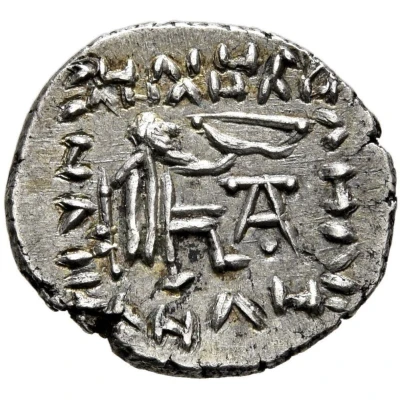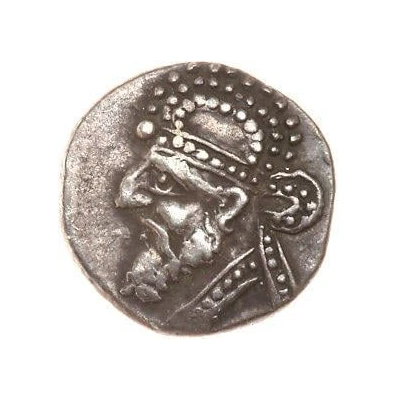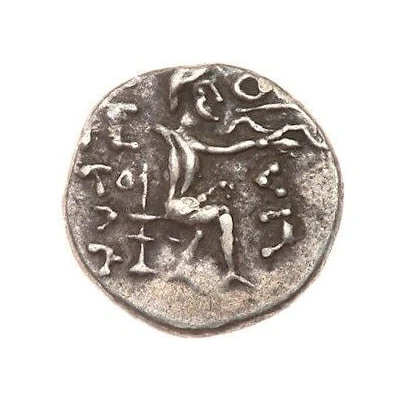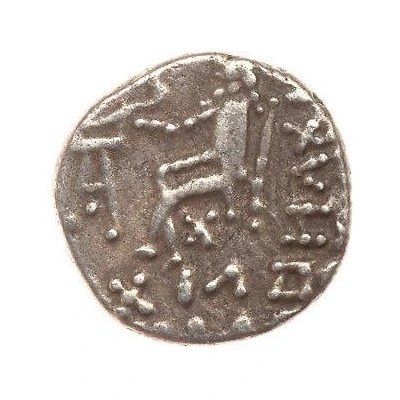


© Classical Numismatic Group, Inc.
Diobol - Pacorus II
| Silver | 1.32 g | 13 mm |
| Issuer | Parthian Empire (Parthian Empire (247 BC - 224 AD)) |
|---|---|
| King | Pacorus II (78-110) |
| Type | Standard circulation coin |
| Years | 78-110 |
| Value | Diobol (⅓) |
| Currency | Drachm (247 BC-224 AD) |
| Composition | Silver |
| Weight | 1.32 g |
| Diameter | 13 mm |
| Shape | Round (irregular) |
| Technique | Hammered |
| Orientation | Variable alignment ↺ |
| Demonetized | Yes |
| Updated | 2024-10-10 |
| Numista | N#375702 |
|---|---|
| Rarity index | 100% |
Reverse
Archer (Arsakes I) seated right on throne, holding bow; below bow, monogram; around, blundered legend.
Edge
Plain
Interesting fact
One interesting fact about the Diobol coin of Pacorus II from the Parthian Empire is that it features a unique blend of Greek and Persian influences in its design. The obverse side of the coin depicts a bearded king facing right, wearing a crown and a necklace, while the reverse side shows a mythological creature, possibly a Griffin, standing left, with a crescent moon and a star above it. This fusion of Greek and Persian elements reflects the cultural diversity of the Parthian Empire, which was a major power in the ancient Near East and played a significant role in the development of trade, art, and culture in the region.



